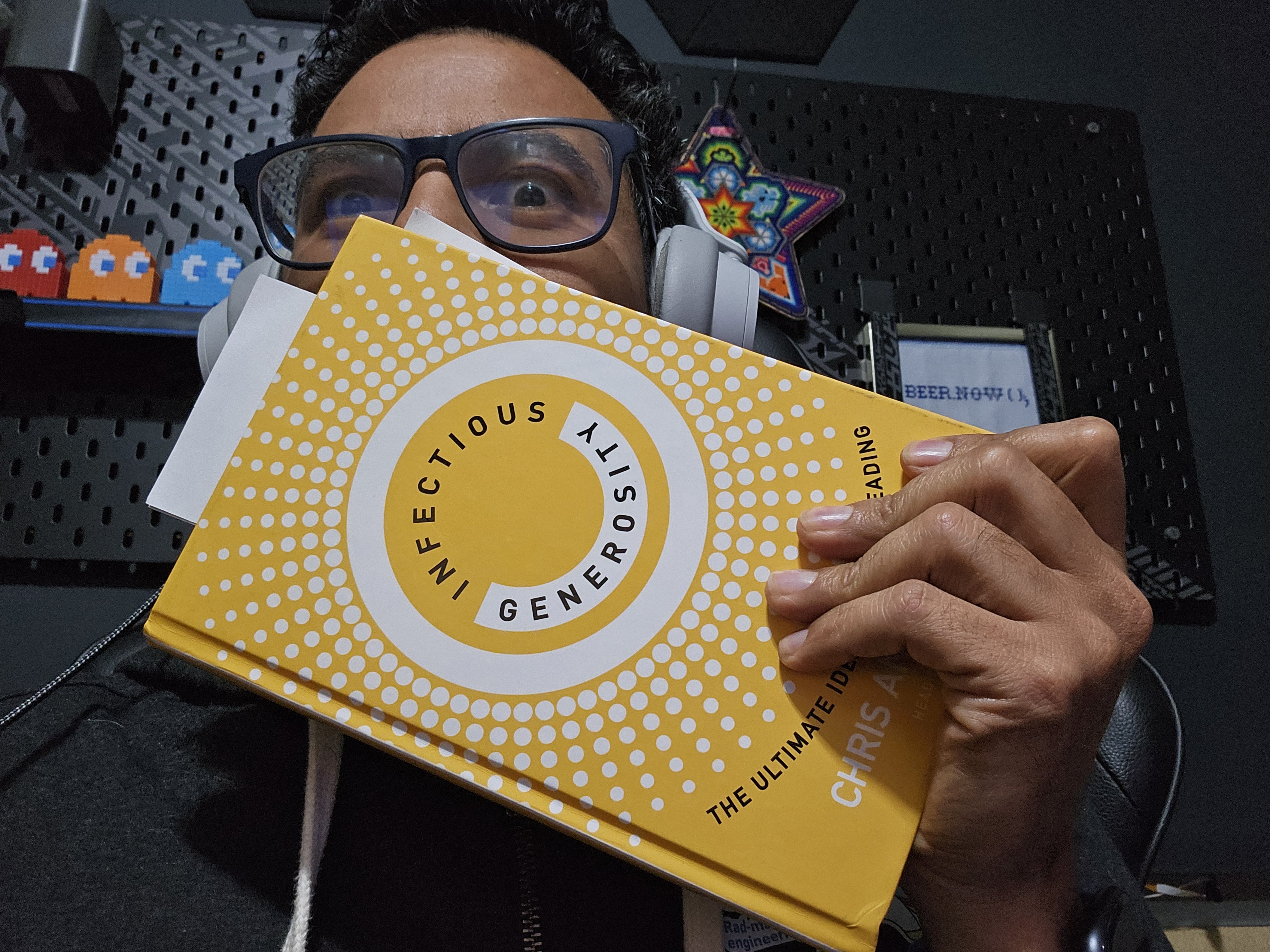Breaking the Cycle of Fear: How We Can Spread a Better Kind of Story
A few months back, I received a free book at a Microsoft event: Infectious Generosity by Chris Anderson. It sat on my bookshelf for a couple of weeks until one day, out of sheer boredom, I grabbed the shiniest cover one (a deep yellow) and started flipping through it. To my surprise, it’s written by the Head of TED (I love TED!), and while much of the book is gold, this blog is about a particular section that completely resonated with a thought I’ve had for years. It touches on a phenomenon we’ve all noticed but rarely talk about: the media’s relentless focus on the worst of humanity.
If you’ve read my previous piece The Digital Umwelt: Beyond the Noise and Crap Content, you’ll know where I’m coming from.

Turn on any news channel, scroll through social media, and you’ll see it: tragedy, disaster, scandal. After the 2024 U.S. presidential election, this only got worse, especially on platforms like Twitter and even BlueSky. The media is saturated with stories that tap into our deepest fears, often amplifying the most alarming aspects of any event. It’s not hard to see why—these stories attract clicks, views, and engagement. Fear sells. Fear brings money. Fear even helped elect a divisive candidate. It’s addictive, like watching a train wreck you can’t look away from. We’re hardwired for it; evolution made us that way. But here’s the problem: we’re now stuck in a feedback loop where negativity dominates the narrative, even though the majority of human interactions are positive. And they really are!
Think about it. When was the last time you saw a heartwarming story go viral on the same scale as a scandal or tragedy? Sure, you’ll find examples—a dog rescue video, a touching reunion, Mr. Beast early videos—but they’re exceptions, not the rule. It’s not because these positive stories don’t exist; it’s because they’re not prioritized. The media’s business model thrives on our attention, and our attention is most easily captured by fear, not by warmth.
This realization was one of the reasons I shifted my focus in my videos. Instead of showcasing purely tech content, I started highlighting the voices of others—people who inspire me and have left a mark on my journey. My short videos now feature snippets of advice from people I admire, with the hope of creating a “good infection”. I want to spread feel-good stories and amplify the voices of those who have shaped me, making space for genuine connection in a world obsessed with clicks.
So how do we break the cycle? How do we shift the narrative from one of fear to one of hope?
We have more power than we think. It starts with a simple act of choice—what we choose to engage with, share, and amplify. Instead of doom-scrolling through anxiety-inducing headlines, we can consciously seek out and share stories that inspire us, stories that showcase the best of humanity rather than the worst. I know it sounds small, almost naive. But media outlets watch closely what their audience engages with; their survival depends on it. By shifting what we choose to amplify, we can nudge the focus away from fear-driven narratives toward stories of generosity, kindness, and connection. There is a whole section in the book named What Mainstream Media Can Do.
So, yesterday’s night code rush led me to create the The Bright Side bot on Mastodon. Using .NET and AI, the bot curates and publishes microblogging threads featuring feel-good stories from news sites. It’s my small attempt to bring more bright news into people’s social media feeds, injecting a little bit of hope to counterbalance the flood of negativity. I wanted to create something that could act as a beacon, even if it’s just a tiny spark in the vast online darkness.
It’s about creating a new kind of feedback loop—one where positive stories aren’t the outliers but the norm. Where tales of everyday acts of kindness get as much attention as tales of conflict. This doesn’t mean ignoring the bad or pretending problems don’t exist. It’s about balance. It’s about making space for the good and acknowledging that the world is filled with generosity, even if it doesn’t always make the headlines.
Next time you find yourself being pulled into a negative news spiral, pause. Take a moment to seek out stories that lift you up instead of dragging you down. Share them. Talk about them. Not just to counteract the bad, but to remind yourself—and others—that there is so much good out there waiting to be recognized.
In a world where fear sells, let’s be the ones who choose to spread hope. Because if fear can be infectious, then so can generosity.
